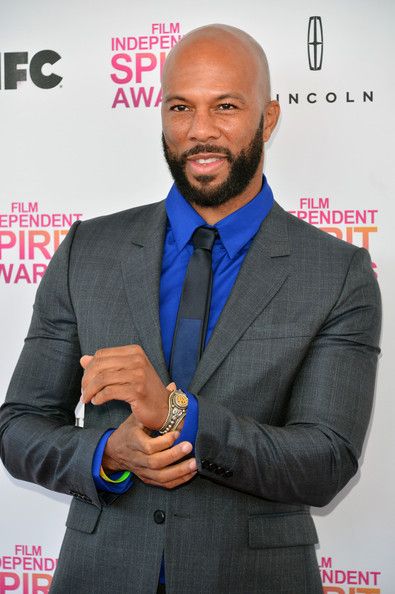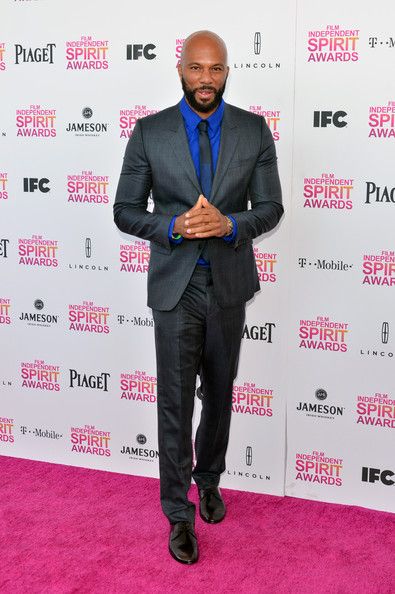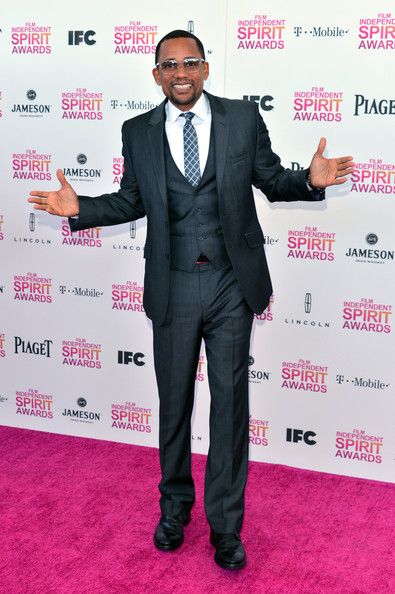Source: http://news.feedzilla.com/en_us/stories/politics/top-stories/287602005?client_source=feed&format=rss
ubaldo jimenez ncaa final country music awards autism awareness angelman syndrome total recall troy tulowitzki
PARIS (AP) ? New U.S. Secretary of State John Kerry says the time has passed for Syrian President Basher Assad to leave power.
His first official meetings with France's leadership come amid increasing efforts by both countries to bolster Syria's opposition.
Kerry met Wednesday with French President Francois Hollande in Paris, chatting in French on the front steps of the Elysee Palace.
The war in Syria and Iran's nuclear program have topped the agenda of Kerry's tour of Europe and the Middle East.
Officials in the United States and Europe said Tuesday the Obama administration is nearing a decision on whether to provide non-lethal assistance to carefully vetted fighters opposed to Assad.
"We are examining and developing ways to accelerate the political transition that the Syrian people want and deserve," Kerry said.
Source: http://news.yahoo.com/kerry-says-time-now-syrias-assad-quit-134016394--politics.html
buenos aires train crash argentina train crash nancy pelosi nancy pelosi gop debate republican debate lewis black
SEOUL, South Korea (AP) ? Asian stock markets mostly rose Wednesday after the Federal Reserve chief played down risks from the U.S. central bank's low interest rate policies, offsetting worries that Italy's indecisive election result will rekindle Europe's debt crisis.
Hong Kong's Hang Seng rose 0.5 percent to 22,642.27 and South Korea's Kospi added 0.3 percent to 2,005.91. Australia's S&P/ASX 200 gained 0.7 percent to 5,040.20. Shares in mainland China, Taiwan and Indonesia also rose.
Japanese stocks were the only losers in Asia as the yen strengthened against the U.S. dollar following several months of weakness that boosted exporters. Japan's Nikkei 225 fell 0.8 percent to 11,310.45.
In testimony to Congress on Tuesday, Federal Reserve Chairman Ben Bernanke expressed confidence that the central bank's low-rate policies currently pose little risk of causing runaway inflation or a stock market bubble. That eased recent jitters the Fed would start to withdraw its super easy monetary policy.
U.S. economic indicators also gave Asian markets a lift. Home sales rose to the highest level in more than four years last month and American consumers showed confidence for the first time in three months in February.
Yet stock market gains in Asia remained modest, showing that investors have not fully regained their appetite for risky assets ahead of looming automatic spending cuts due to start Friday in the U.S.
And with Italy emerging from elections on Tuesday with no clear winner, there are lingering uncertainties about the fate of deficit and debt reduction measures in one of Europe's biggest economies.
The Italian election result drove markets in Europe markedly lower. If Italian parties fail to form a governing coalition, new elections would be required, causing more uncertainty and a leadership vacuum.
On Tuesday, Italy's FTSE MIB index fell nearly 800 points, or 5 percent, to 15,552. Germany's DAX was down 176 points, or 2.3 percent, to 7,597 and the CAC-40 in France fell 99 points, or 2.7 percent, to 3,621.
The Dow Jones industrial average rose 115.96 points, or 0.8 percent, to 13,900.13 on Tuesday. The Standard & Poor's 500 index rose 9.09 points, or 0.6 percent, to 1,496.94. The Nasdaq composite index rose 13.40 points, or 0.4 percent, to 3,129.65.
In currency markets, the euro was trading at $1.3066. The dollar weakened to 91.99 yen.
Benchmark crude for April delivery was up 24 cents at $92.87 a barrel in electronic trading on the New York Mercantile Exchange.
Source: http://news.yahoo.com/asian-stocks-mostly-feds-low-rates-support-035849694--finance.html
senior bowl norovirus Coachella 2013 Eclampsia Kendrick Lamar JJ Abrams New Orleans Pelicans
ufc 143 fight card my fair lady conversion disorder the chronicle spinal stenosis the forgotten man mike jones
Fereshta Kazemi's film "The Icy Sun" breaks new ground for Afghanistan, where victims of rape can be forced to marry their attackers to preserve their families' honor. NBC News' Mandy Clark reports.
By Mandy Clark, Correspondent, NBC News
KABUL, Afghanistan ? A woman is raped. Instead going after her attacker, the law and society imprison the victim.
This is often the reality in Afghanistan. To bring attention to the issue, Afghan-American actress Fereshta Kazemi took the role of a rape victim in a recent film, "The Icy Sun."
"The concept of honor for the men rests on a woman?s shoulders," said Kazemi, 35.?"Her brothers and her family feel that they have been raped of their honor."
This perception of honor means that society often blames the women who are attacked, she says.
"There is this atmosphere where women are vulnerable to having people talk about them or say negative things or say that she wanted to be raped or say, 'Look at the way they were behaving,'" Kazemi said.
These deeply ingrained attitudes exist against a hostile backdrop for Afghan women and girls: The country remains one of the most dangerous countries in which to be a woman, according to a Thomson Reuters Foundation survey. Close to 90 percent of women face at least one form of physical, sexual or psychological violence in their lifetimes, according to a?Human Rights Watch annual report. Up to 80 percent of women face forced marriage, Thomson Reuters Foundation reports.
Additionally, many Afghan women are imprisoned for so-called moral crimes, which include running away from an abusive home or fleeing a forced marriage. Human Rights Watch estimates that around half of the approximately 700 women and girls in prison in the country are facing such charges.
One woman?s real-life story vividly illustrates the problems confronting women who are violently attacked.
In 2009, Gulnaz?s cousin?s husband tied her to a bed and raped her when she was home alone. She was left pregnant from the assault. Her family reported the crime to local police in the northern province of Kunduz, but instead of going after her rapist, officials jailed her for adultery. While in prison she gave birth to a baby girl, Masqa.
Her plight made international headlines over a year ago. American lawyer Kim Motley took on her case and helped Gulnaz get a presidential pardon in December 2011.
"I think in theory justice was done. She was released, she was exonerated," Motley said. "What trumped that once she was released was the culture. It was the ? perception of her probably going to fail as a woman, as a single woman with a kid in Afghanistan."
After her release, Gulnaz was confined to a women?s shelter for 13 months.? She felt it was no different from prison. Afghan officials blocked Gulnaz, now 22, from getting papers to apply for asylum in another country, Motley says.
The same officials pushed Gulnaz into a decision -- two weeks ago, Gulnaz married her rapist.
"Basically there were people in the Afghan government who helped to facilitate and pressure her to marry the guy," Motley said.
Many Afghan rape victims are forced to marry their attackers as a way of restoring the family honor.
Against this backdrop, Motley says she understands why women hesitate to go to the authorities.
"I can certainly understand a woman not wanting to report a rape," she said. "Frankly ? if I was raped here as an Afghan woman, I don?t know if I would do the same," she said.
A recent United Nations report found one positive trend: In some areas, such as the major cities of Kabul and Herat, more women are reporting rape. This does not necessarily mean that more are being assaulted, only that victims are willing to come forward. In contrast, in Taliban strongholds such as Logar and Wardak, there were no reports of rape. U.N. officials say in the report that this does not mean that no rapes occurred but that women were too scared to report them.
So when it comes to security, it is safety close to home that seems foremost in the minds of Afghan women.?
As one American diplomat speaking on the condition of anonymity said:
"I am always taken aback when I talk to Afghan women and ask them what worries them the most. Their reply is domestic abuse. They are more concerned with being beaten or set on fire by their husbands or uncles than any larger issue like Taliban."
Related:?
Afghanistan: Where actresses risk their lives for their art
'Game with a purpose': Vietnam vet, teen bring Scouting and help to Afghanistan
Photos: Afghanistan - Nation at a crossroads
morris claiborne mothers day gifts clippers lisa lampanelli lisa lampanelli bronx zoo memphis grizzlies
Feb. 24, 2013 ? Identifying the mysterious mechanism underlying high-temperature superconductivity (HTS) remains one of the most important and tantalizing puzzles in physics. This remarkable phenomenon allows electric current to pass with perfect efficiency through materials chilled to subzero temperatures, and it may play an essential role in revolutionizing the entire electricity chain, from generation to transmission and grid-scale storage. Pinning down one of the possible explanations for HTS -- fleeting fluctuations called charge-density waves (CDWs) -- could help solve the mystery and pave the way for rapid technological advances.
Now, researchers at the Massachusetts Institute of Technology and the U.S. Department of Energy's Brookhaven National Laboratory have combined two state-of-the-art experimental techniques to study those electron waves with unprecedented precision in two-dimensional, custom-grown materials. The surprising results, published online February 24, 2013, in the journal Nature Materials, reveal that CDWs cannot be the root cause of the unparalleled power conveyance in HTS materials. In fact, CDW formation is an independent and likely competing instability.
"It has been difficult to determine whether or not dynamic or fluctuating CDWs even exist in HTS materials, much less identify their role," said Brookhaven Lab physicist and study coauthor Ivan Bozovic. "Do they compete with the HTS state, or are they perhaps the very essence of the phenomenon? That question has now been answered by targeted experimentation."
Custom-grown Superconductors
Electricity travels imperfectly through traditional metallic conductors, losing energy as heat due to a kind of atomic-scale friction. Impurities in these materials also cause electrons to scatter and stumble, but superconductors can overcome this hurdle -- assuming the synthesis process is precise.
For this experiment, Bozovic used a custom-built molecular beam epitaxy system at Brookhaven Lab to grow thin films of LaSrCuO, an HTS cuprate (copper-oxide) compound. The metallic cuprates, assembled one atomic layer at a time, are separated by insulating planes of lanthanum and strontium oxides, resulting in what's called a quasi-two-dimensional conductor. When cooled down to a low enough temperature -- less than 100 degrees Kelvin -- strange electron waves began to ripple through that 2D matrix. At even lower temperatures, these films became superconducting.
Electron Sea
"In quasi-two-dimensional metals, low temperatures frequently bring about interesting collective states called charge-density waves," Bozovic said. "They resemble waves rolling across the surface of a lake under a breeze, except that instead of water, here we actually have a sea of mobile electrons."
Once a CDW forms, the electron density loses uniformity as the ripples rise and fall. These waves can be described by familiar parameters: amplitude (height of the waves), wavelength (distance between waves), and phase (the wave's position on the material). Detecting CDWs typically requires high-intensity x-rays, such as those provided by synchrotron light sources like Brookhaven's NSLS and, soon, NSLS-II. And even then, the technique only works if the waves are essentially frozen upon formation. However, if CDWs actually fluctuate rapidly, they may escape detection by x-ray diffraction, which typically requires a long exposure time that blurs fast motion.
Measuring Rolling Waves
To catch CDWs in action, a research group at MIT led by physicist Nuh Gedik used an advanced ultrafast spectroscopy technique. Intense laser pulses called "pumps" cause excitations in the superconducting films, which are then probed by measuring the film reflectance with a second light pulse -- this is called a pump-probe process. The second pulse is delayed by precise time intervals, and the series of measurements allow the lifetime of the excitation to be determined.
In a more sophisticated variant of the technique, largely pioneered by Gedik, the standard single pump beam is replaced by two beams hitting the surface from different sides simultaneously. This generates a standing wave of controlled wavelength in the film, but it disappears rapidly as the electrons relax back into their original state.
This technique was applied to the atomically perfect LaSrCuO films synthesized at Brookhaven Lab. In films with a critical temperature of 26 degrees Kelvin (the threshold beyond which the superconductivity breaks down), the researchers discovered two new short-lived excitations -- both caused by fluctuating CDWs.
Gedik's technique even allowed the researchers to record the lifetime of CDW fluctuations -- just 2 picoseconds (a millionth of a millionth of a second) under the coldest conditions and becoming briefer as the temperatures rose. These waves then vanished entirely at about 100 Kelvin, actually surviving at much higher temperatures than superconductivity.
Ruling out a Suspect
The researchers then hunted for those same signatures in cuprate films with slightly different chemical compositions and a greater density of mobile electrons. The results were both unexpected and significant for the future of HTS research.
"Interestingly, the superconducting sample with the highest critical temperature, about 39 Kelvin, showed no CDW signatures at all," Gedik said.
The consistent emergence of CDWs would have bolstered the conjecture that they play an essential role in high-temperature superconductivity. Instead, the new technique's successful detection of such electron waves in one sample but not in another (with even higher critical temperature) indicates that another mechanism must be driving the emergence of HTS.
"Results like this bring us closer to understanding the mystery of HTS, considered by many to be one of the greatest problems in physics today," Bozovic said. "The source of this extraordinary phenomenon is slowly but surely running out of places to hide."
Share this story on Facebook, Twitter, and Google:
Other social bookmarking and sharing tools:
Story Source:
The above story is reprinted from materials provided by DOE/Brookhaven National Laboratory.
Note: Materials may be edited for content and length. For further information, please contact the source cited above.
Note: If no author is given, the source is cited instead.
Disclaimer: Views expressed in this article do not necessarily reflect those of ScienceDaily or its staff.
the island president the maldives harper lee mega millions numbers the fray seahawks new uniforms 2012 tornadoes in dallas
Which city has the worst traffic in the country? ?Los Angeles and Atlanta make a string case, but another major metro snags the title.
By Kurt Ernst,?Guest blogger / February 23, 2013
Automobiles wait in a traffic jam on a New York City highway. Washington, D.C had the worst traffic in America in 2011, followed closely by Los Angeles and San Francisco.
Mike Segar/Reuters/File
Enlarge The grass, it seems, is always greener on the other side of the highway median. Ask any U.S. driver about his commute, and you?ll likely get a lengthy tirade about the abysmal traffic conditions on his daily drive.
?Whether you live in Atlanta, Los Angeles, Spokane, New York or even Orlando, chances are that you dread the daily commute and believe that traffic is better anywhere else in the United States than in your city.
?Thanks to the most recent Annual Urban Mobility Report from the Texas A&M Transportation Institute (TTI), we now know who?s got bragging rights for the latest year studied, 2011.
High Gear Media?s flagship website offers news, reviews, and the latest shopping tools for the cars that matter to US consumers. For more expert insights from Car Connection editors and opinions from around the Web,?click here.
' +
google_ads[0].line2 + '
' +
google_ads[0].line3 + '
Subscribe Today to the Monitor
Click Here for your FREE 30 DAYS of
The Christian Science Monitor
Weekly Digital Edition
?According to the TTI, traffic in Washington D.C. is the worst, with each commuter losing an average of 67 hours per year in traffic. Los Angeles and San Francisco are tied for second place, with each municipality taking 61 hours annually from its commuters.
?In fourth place is Newark, New Jersey, lumped into one miserable bundle with New York, New York. Drivers here can expect to waste 59 hours sucking down exhaust fumes each year, which is quite a bit worse than fifth-place Boston (with a mere 53 hours annually).
?To the surprise of no one living in Houston, the Texas city is next on the list, with 52 hours of wasted time yearly (which is also the national average for very large cities). Atlanta and Chicago tie for seventh place (with 51 hours each), while Philadelphia and Seattle split the final spot, taking only 48 hours from commuters annually.
?To put the worst U.S. cities in perspective, the average American commuter wastes 38 hours per year in traffic, and needs to allow a full hour for a trip that, under ideal circumstances, would take just 20 minutes. Is it any wonder the vast majority of us are sleep-deprived and stressed to the breaking point, or that fatal accidents are again on the rise?
?If there?s good news to be found in the latest survey, it?s this: traffic in 2012 still wasn?t as bad as traffic in the pre-recession days of 2007, but we suppose that?s because many Americans are still out of work. The relief on the roads is expected to be short-lived, however, as the TTI expects congestion to grow significantly in the coming years. ? ? ? ? ? ? ? ??
The Christian Science Monitor has assembled a diverse group of the best auto bloggers out there. Our guest bloggers are not employed or directed by the Monitor and the views expressed are the bloggers' own, as is responsibility for the content of their blogs. To contact us about a blogger,?click here.?To add or view a comment on a guest blog, please go to the blogger's own site by clicking on the link in the blog description box above.
Source: http://rss.csmonitor.com/~r/feeds/csm/~3/Dvrk8kJ0PHg/The-10-worst-US-cities-for-traffic

On the eve of the Oscars, celebs hit up the big 2013 Independent Spirit Awards in Santa Monica Saturday afternoon.? We've got the YBF celebs who made their way tot he fab event insdie....
?


She gorgeous and knows how to rock an Italian designer.? Django Unchained star Kerry Washington donned a green and purple floral two-toned dress by Giambattista Valli.? And paired it with matching shoes and a Bottega Veneta clutch.? Adore this look.

Zoe Saldana kept with the green trend and rocked a striped Dolce & Gabbana dress paired with white Casadei pumps with green piping. And she hit the carpet with her sister Cisley:


It's def not the easiest look to pull off.? We don't hate it, but not loving it.

Zoe posed it up with Best Actress nominee Quvenzhan? Wallis.

She and her staple puppy purse looked cute as usual.? And we're pulling for her at the Oscars!

Q brought her mom and sister along for some moral support.

Silver Linings Playbook star Chris Tucker hit the pink carpet in a white dinner jacket.

Paula Patton rocked a matronly look of an off-white knee length lace dress with conservative bow tie Louboutin pumps:

 ?
?
Thoroughly convinced she doesn't have a stylist.? This isn't Sunday School boo.
 ??
??
"Parks & Recreations" star Rashida Jones is still getting buzz for her Celeste & Jesse Forever movie last year.

 ??
??
Movie 43 star Common hit the event's pink carpet looking yummy.

Hill Harper made an appearance as well.

And newcomers Emayatzy Corinealdi, who starred in the Miu Miu all-female short "The Door," and David Oyelowo looked fab at the event.? David had a role in the Oscar nominated film Lincoln and also starred with Kerry Washington in The Last King of Scotland and will play in Nina with Zoe Saldana.
bill nye Hurricane Isaac 2012 Snooki Baby terrell owens terrell owens neil armstrong little league world series
In the world of NFL linemen, it's always nice to have a large rump.
The NFL Scouting Combine makes for some uncomfortable moments, with large men in tight outfits running with slow motion cameras clicking away.
One example of this pure awkwardness is the constant excitement of grown men when they see an offensive or defensive linemen with a large backside. Mike Mayock is on NFL Network, and he highlighted this point Saturday morning by exalting "See that big butt?"
Every general manager and scout wants to see a large rear end for a few reasons, the main one being power. A big butt says that the lineman has good lower body strength that can really help with push in the trenches.
Another reason is explosion off the line of scrimmage. While upper body strength is terrific, all the leverage a lineman needs is created from the waist down.
And that's the bottom line.
? Chip Kelly wins Day 1 of the Combine
? A new Wonderlic, measuring grown-ass adulthood
? The worst performances of the Life Combine
? Should QBs throw at the Combine? We asked an agent
? The List: 20 sentences guaranteed to start an Internet argument
? ? ? ? ? ? ? ? ? ? ? ? ? ? ? ? ? ? ? ? ? ? ? ? ? ? ? ? ? ? ? ? ? ? ? ? ? ? ? ? ? ? ? ? ? ? ? ? ? ? ? ? ? ? ? ? ? ? ? ? ? ? ? ? ? ? ? ? ? ? ? ? ? ? ? ? ? ? ? ? ? ? ? ? ? ? ? ? ? ? ? ? ? ? ? ? ? ? ? ? ? ? ? ?
Source: http://www.sbnation.com/nfl/2013/2/23/4020966/2013-nfl-combine-offensive-lineman-butt-size
after christmas sales case mccoy case mccoy UFC 155 Jack Klugman merry Christmas a christmas story

Knighthood, schmighthood. Apple's British design head has just picked up a golden Blue Peter badge. The show, which has been running on UK TV for over 50 years, even had their gift reciprocated, with Sir Jonathan Ive offering up a solid aluminum Blue Peter badge (above) that took over 10 hours to craft. Ive can count himself in good company, joining other luminaries like JK Rowling and David Beckham. The segment will air during a gadget special tomorrow, but you can watch the exchange between kids TV and Apple design right after the break.
Source: http://www.engadget.com/2013/02/15/jony-ive-blue-peter-badge/
Sasha McHale Boy Meets World elizabeth taylor cam newton danielle fishel FedEx Gabriel Aubry
Sorry, Readability was unable to parse this page for content.
Source: http://video.msnbc.msn.com/nightly-news/50816469/
Kohls Black Friday www.walmart.com Macho Camacho Rise of the Guardians Pumpkin Pie Jack Taylor Apple Pie Recipe
The Federal Trade Commission has been testifying to Congress about this group for decades, and on Jan. 30 it announced results of its "first empirical study of debt buyers - companies in the business of buying consumer debts and trying to collect on them."
As the FTC previously determined, debt collectors who have insufficient information often approach the wrong consumers, try to collect the wrong amount, or both. The report, "Structure and Practices of the Debt Buying Industry" ( tulsaworld.com/FTCDebtBuyers), found there is much room for improvement in the information that debt buyers have when they contact consumers attempting to collect.
The study analyzed 5,000 portfolios of consumer debt containing 90 million consumer accounts having a $143 billion face value. By dollar amount, most of the debt studied, 71 percent, was credit card debt, but the study also included mortgage, medical, utility, telecommunications and other consumer debt. It evaluated the types of information debt buyers received from creditors at and after the time of purchase, as well as the contracts governing the relationships between debt buyers and creditors.
The report notes that debt-buying plays a role in consumer credit. Debt buyers paid 4 cents on the dollar, getting older debt for less, for billions in debts from creditors. Proceeds reduced creditor lending losses, allowing them to offer more credit at lower prices.
But as the report points out, debt-buying also raises significant consumer protection concerns. "Consumers each year disputed 1 million debts that debt buyers attempted to collect," the FTC reported.
FTC experience has found that consumers often dispute the amount of the debt, or whether they owe the debt at all. Debt buyers verified only half of the disputed debts, meaning buyers could not verify, or did not attempt to verify, 500,000 debts each year.
The report also notes that at the time of purchase, creditors provided debt buyers with some important information concerning debts, including the name, address and phone number, and Social Security number of the debtor; the creditor's account number; the outstanding balance on the account; and the dates of account opening and last payment.
Buyers, however, did not receive some "key information about debts purchased," mainly whether consumers previously disputed the debts or whether collectors previously verified the debts.
Creditors also imposed limitations on debt buyers' ability to obtain information and documents on accounts after the sale. Most contracts between creditors and buyers stated that creditors didn't warrant the information provided buyers was accurate.
The study focused on nine of the nation's largest debt buyers, which make up more than 75 percent of the industry, and did not include data from smaller debt buyers. It also did not consider the practices debt buyers used when taking legal action against consumers, or the accuracy of the information debt buyers received and used to collect debts.
The FTC analyzed 5,000 debt portfolios of 90 million consumers who owed $143 billion, the study covering nine of the nation's largest debt buyers, or 75 percent of the industry. It found that consumers disputed a million debts annually, but debt buyers verified only 500,000.
A 2011 CU report ( tulsaworld.com/CU2011CredColl) issued by the East Bay Community Law Center showed debt collectors are filing more and more lawsuits without enough proof to back them up. Without complete documentation, collectors often sue on invalid debts or even paid debts. This is worsened by consumers not receiving timely suit notices or debt so old that consumers had no pay-off records.
CU has urged state and federal regulators to end robo-signing, collection attempts without documentation, suing the wrong people, suing for the wrong amounts and suing on debts they can't lawfully recover. CU wants the FTC to establish a "sell by" date for all debt, making it illegal to sell or attempt to collect debt that is more than 7 years old. In Oklahoma, contract debt is uncollectible after five years of nonpayment - see the June 10, 2010, Action Line ( tulsaworld.com/Action06102010).
The organization wants all debt collectors, including debt buyers, to reveal the name of the original creditor and to provide an itemized record of the total principal, interest, fees and other charges added to the debt and to provide detailed records on the debt to consumers within five days of first notification.
CU wants increased oversight of consumers being properly notified of lawsuits, courts to be required to provide supplemental notice of filed collection suits to debtors, and default judgments to be prohibited when notices are returned as "undeliverable."
Original Print Headline: FTC finds issues with debt buyers
Source: http://www.tulsaworld.com/site/articlepath.aspx?articleid=20130213_15_E4_CUTLIN134259&rss_lnk=15
2012 ncaa tournament bracket matterhorn chris harrison girl scouts printable bracket game change own
BOSTON (AP) -- With schools still closed, cars still buried and streets still blocked by the widespread weekend snowstorm, officials around southern New England are asking people to pick up a shovel and help out.
In Boston, a "snow angel" campaign is using social media to encourage neighbors and friends to be an angel and help dig out the stranded.
Hundreds of volunteers carried shovels to downtown Waterbury, Conn., after the mayor promised to pay minimum wage to anyone who helped clear the City Hall area and the schools Tuesday.
In Rhode Island, dozens of volunteers responded to a call by the volunteer advocacy group Serve Rhode Island to help clear snow.
Pedro Gonzalez of Cranston, R.I., had done three shoveling jobs for elderly residents by mid-afternoon Tuesday, fueled only by a few sports drinks and the satisfaction he said the work gives him.
"You feel full, you know?" he said, speaking after his most recent job in Providence. "You feel real good and you sleep better."
The snowfall Friday and Saturday buried the region in 1 to 3 feet of snow, and communities still are struggling to get back to normal.
The storm, blamed for at least 18 deaths across the U.S. and Canada, caused flooding that forced coastal evacuations in Massachusetts and carried high winds that downed trees and power lines.
By early Wednesday, more than 6,800 utility customers still were without power, including 5,539 in Massachusetts, which was hardest hit with outages. More than 650,000 homes and businesses in eight states were without electricity at one point.
Boston Mayor Thomas Menino's office has encouraged neighbors to help out neighbors after other storms, but this time it's using social media to create a "buzz" and spread the word more broadly, said Emily Shea, the city's Elderly Affairs commissioner.
Shea said most people who call the mayor's hotline for help clearing snow end up figuring things out themselves. But others don't, and the snow angel campaign aims to make sure they aren't forgotten.
"We're still just a couple days after the storm, and we still want to make sure folks are looking out for each other," she said.
The new workforce in Waterbury was formed after Mayor Neil O'Leary took a friend's suggestion to hire kids who are off from school ? and possibly getting bored ? to clear out City Hall and the schools, which are closed at least until Wednesday.
O'Leary put the word out, offering Connecticut's $8.25 hourly minimum wage. He said about 500 people, most between ages 14 and 18 with some adults mixed in, showed up at City Hall at noon Tuesday.
The offer is good again Wednesday, and O'Leary figures the workers will cost the city about $50,000. But he hopes the teens will get more than money in return, he said.
"We're giving them a little sense of community, a sense of pride," O'Leary said.
The Providence volunteers were rounded up by Serve Rhode Island in partnership with the United Way. The group recently deployed hundreds of people to help with Rhode Island's Superstorm Sandy cleanup, so it had a list of possible volunteers to alert. It also requested snow-clearing volunteers on its website.
Share Rhode Island Executive Director Bernie Beaudreau said the group has had some worries over whether people would pose as volunteers and victimize those they were supposed to help. But he said the much larger Sandy operation went well and he expected no problems this time.
"We're banking on the good will of others," he said,
Gonzalez, 40, said he's anticipating some aches for his efforts, but added he's glad to offer his time.
"Personally, I really love it," said Gonzalez, who helps manage his family's convenience store. "I believe that a blessing is useless if you don't share it."
Source: http://news.yahoo.com/snow-buried-communities-seek-help-132217882.html
boston marathon tu pac hologram shuttle pippa middleton space shuttle discovery spacex tupac hologram
The Islamist militant group Boko Haram is thought to be behind the recent gruesome attacks. But suspicion about vaccination campaigns has deeper historical roots in northern Nigeria, writes John Campbell.
By John Campbell,?Guest blogger / February 12, 2013
In this 2004 file photo, immunizers administer polio vaccine to a child carried by a marketwoman on her back in Lagos, Nigeria.
Saurabh Das/Associated Press
EnlargeOn Feb. 8, unidentified gunmen killed four health workers and injured three others at a site in the Kano state of northern Nigeria, according to the media.? In what may have been part of?a coordinated attack, at about the same time a separate set of gunmen killed an additional five health workers at another site. The health workers were all involved in a?polio vaccination campaign.
Skip to next paragraph' +
google_ads[0].line2 + '
' +
google_ads[0].line3 + '
Subscribe Today to the Monitor
Click Here for your FREE 30 DAYS of
The Christian Science Monitor
Weekly Digital Edition
In a third incident in the same time frame,?gunmen killed three foreign medical doctors?in Yobe state. One physician was beheaded, and all three had machete wounds. The three medical doctors were identified as North Koreans living in Yobe as part of a state-sponsored technical exchange. Press reports do not indicate whether the three were also involved in the polio immunization campaign.
In the aftermath of these killings, the inspector general of police has ordered ?special security? for those involved in the polio immunization campaign.
Commentators, including Senator Bukola Saraki, a former governor of the western Kwara state and former chairman of the Governors Forum, and the national chairman of Journalists Against Polio, see the murders as inevitably setting back the polio immunization campaign. Kano has the largest number of polio cases in Nigeria, which is itself one of only?three countries that still have a reservoir of the virus.
According to the press, security operatives believe the Islamist militant group Boko Haram is responsible for the murders.? However, following the usual pattern in the aftermath of attacks over the past several weeks, no one has claimed responsibility.
Opposition to the polio vaccination is longstanding on the basis that it is a Western and Christian plot sponsored by the Nigerian federal government in Abuja to limit Muslim births. It is a radical Islamist cause that builds on opposition dating back to controversial pharmaceutical trials by the American company Pfizer in the 1990s.
There are anecdotal reports that many mothers continue to avoid vaccination for their male children.?In 2003, an earlier World Health Organization vaccination campaign was halted because of popular outcry when minute traces of estrogen were found in the vaccine. The campaign only restarted a year later when an ?Islamic? source of vaccine was identified (Malaysia) and pressure was exerted by Saudi Arabia, the Organization of the Islamic Conference, and Western donors, including the United States.?
While the vaccination campaign was suspended, polio of Nigerian origin reportedly spread to seventeen countries previously free of the disease, including Indonesia. More recently, Kano governor Rabiu Musa Kwankwaso has strongly supported the polio vaccination campaign. Even so, progress towards eradication remains slow. Nigerian commentators are right when they say that the campaign will surely suffer set backs as a result of the murders.
The Christian Science Monitor has assembled a diverse group of Africa bloggers. Our guest bloggers are not employed or directed by the Monitor and the views expressed are the bloggers' own, as is responsibility for the content of their blogs. To contact us about a blogger, click here.
prince fielder state of the union address 2012 obama state of the union 2012 2012 state of the union address jorge posada maurice sendak sotu
CONWAY, SC (WMBF) - Conway Downtown Alive will present the 3rd Annual Conway Bridal Expo on Saturday, Feb. 23 from 12 to 5 p.m.
The Expo, which is being held at The Sidewheeler in Downtown Conway, will offer brides the chance to interact with prospective vendors in a more intimate setting than larger bridal showcases.
A representative from Conway Downtown Alive notes that the expo is not only for brides but for anyone looking to celebrate a special occasion, like an anniversary or reunion.
At least 40 vendors will be in attendance, including the Trestle Bakery, Conway Rental Center, Moore Farm House, Custom Multimedia, and Costco.
After experiencing the expo hall, attendees can pick up and utilize the Conway Alive Bride Guide to direct them to shops in Downtown Conway that offer bridal accessories and registries.
Admission is free to the public and is presented with support from Conway Rental Center, Cumulus Radio, Santee Cooper, PCRX Computers, and HTC.
Vendor spaces are still available.
Conway Downtown Alive is a non-profit organization whose goal is to stimulate economic development, encourage historic preservation, and promote the vitality of Downtown Conway.
For more information or to become a vendor, please call 843-248-6260 or visit Conway Downtown Alive on the web.
Copyright 2013 WMBF News. All rights reserved.
Source: http://florencecounty.wmbfnews.com/news/news/50657-free-bridal-expo-conway-not-just-wedding-planning
ernest borgnine ESPYs 2012 venus williams Freeh Report direct tv wimbledon ray allen
CORAL GABLES, Fla. (AP) ? Every University of Miami baseball player underwent testing recently for performance-enhancing drugs, including human growth hormone, a person with knowledge of the situation told The Associated Press.
The testing for HGH is not typical for the school, according to the person, who spoke on condition of anonymity because the university has not authorized the information's release. But these are not typical times for the perennially strong program, which has been linked to Major League Baseball's latest drug mess.
The school is awaiting the results, the person said. University officials not only took the unusual step of ordering the HGH tests for the players, but said last week that 10,000 tests performed on student-athletes since 2005 resulted in no positive tests for steroid usage.
"There's a very thorough investigation going on within the program to try to find out what they can find out," said Miami coach Jim Morris, who could not provide many details of that probe because of university policy. "I feel very sure that our current players are not involved in anything. I think we have a very good system intact. Other than that, the outside, I don't know what's going on outside."
What's going on outside is this: The university's best-known trustee is New York Yankees third baseman Alex Rodriguez. The name of baseball's highest-paid player adorns the Hurricanes' ballpark, thanks to his pledge of $3.9 million for renovations several years ago. Rodriguez was the headliner in a story published by Miami New Times last month, alleging big leaguers got performance-enhancing drugs from a now-closed clinic not far from Miami's campus.
Several other players were named in that story and others that followed, including many with ties to Miami, such as former Hurricane and 2011 NL MVP Ryan Braun and former signee Gio Gonzalez, now a star pitcher with the Washington Nationals. Former Miami player Yasmani Grandal, now a catcher for San Diego, also was implicated in the story.
Jimmy Goins, a strength coach at Miami who worked primarily with the Hurricanes' baseball and cross country teams, also was named in the New Times story, which was based on documents that the alternative weekly paper said was provided by a former employee of the clinic.
"He has been an exemplary employee of the university and categorically denies any allegation or inference of wrongdoing," said Michelle White, Goins' attorney.
Rodriguez, Braun and Gonzalez all have issued denials as well, as have other players.
Four years ago, Rodriguez ? who is expected to miss a big portion of the 2013 season while recovering from hip surgery ? admitted using PEDs from 2001-03 while with the Texas Rangers. Morris said he has not talked with Rodriguez about the latest allegations, but acknowledged that he was disappointed.
"Of course," Morris said. "I was disappointed seeing anybody's name. He's not guilty until he's proven guilty. I haven't seen Alex in forever. He's doing rehab and not working out."
MLB is investigating the New Times report and hopes to acquire the documents the paper used to build its story. Other reports have suggested that the Hurricanes' program is also the subject of an MLB probe, though Morris said he has not been questioned by anyone from the pro game.
"Not one word," Morris said.
All this comes with the university still dealing with an NCAA investigation stemming from claims that a former booster provided impermissible benefits over an eight-year span to the football and men's basketball programs. That process ? which has already dragged on for about two years ? is further delayed while the NCAA awaits the results of a probe into whether its investigators broke the college governing body's own rules in how they gathered information.
Once the NCAA releases that report, Miami's notice of allegations is finally expected to be released quickly.
There are many anti-aging clinics in South Florida, and this isn't the first time that Miami has been mentioned as a hotspot in baseball's battle to clean up the game. The AP has not been able to reach Anthony Bosch, who allegedly ran the Biogenesis clinic, and a one-time associate of Bosch's said it's believed he has been out of the country "for a long time, like a few months."
The Hurricanes bristle at the topic of a connection to Biogenesis. So does the city's pro team, the Miami Marlins.
"Before I moved to Miami, I always had the view that Miami was the epicenter of everything, like the hanging chads and Elian Gonzalez," Marlins President David Samson said. "There's always something going on in Miami. And now that I've lived here for 10 years, it really is true. There's always something here. So it didn't shock me when I read about that laboratory."
It also isn't the first time the Hurricanes' program has been tied to PED issues.
In 2010, a since-departed Miami baseball player was arrested and charged with trying to sell marijuana to undercover officers on university grounds, and police later found 19 vials of HGH at his apartment. Frank Ratcliff played last season at Pensacola State College and is now on the roster at the University of Houston.
Ratcliff did not respond to an email request seeking comment. It's a topic everyone in the game seems tired of talking about ? and hearing about, for that matter.
"Same guys, same names pop up here and there," said Marlins hitting coach Tino Martinez, the longtime Yankees star. "It's frustrating. It's bothersome and it bothers me to hear and read about it. You want to stop reading and hearing about it. The only good thing that comes out of it is this drug-testing stuff is working. Guys are getting caught now. Now guys are saying, 'It's not that good of a plan.'"
Meanwhile, the Hurricanes have a season to play.
"I think our school, as a university athletic department, does as good a job as any school in America at monitoring drug testing," Morris said. "I don't think anybody spends more money and is more cautious than we are to make sure we're doing things the right way. What's going on in Major League Baseball, I have no idea."
Source: http://news.yahoo.com/ap-source-miami-tests-baseball-team-hgh-214752411--mlb.html
sherry arnold snooty fox el debarge portland weather clintonville battlestar galactica blood and chrome my morning jacket
AUTOS: Alfa Romeo Sports Car Revealed
The mid-engine 4C coupe, which retains the styling of the acclaimed concept car, to be sold in the United States by the end of 2013.
Fiat released pictures and some technical details of the Alfa Romeo 4C sports car Tuesday ahead of the model's debut at next month's Geneva auto show. The two-seat coupe, a car that Alfa enthusiasts have dreamed of for almost two decades, retains the styling of the concept vehicle that won acclaim at the Geneva show two years ago.The mid-engine 4C will go on sale in global markets including Europe and the United States by the end of the year, giving an image boost to Alfa, whose sales are struggling due to a lack of fresh product.
There are no details of the 4C's pricing, but Fiat sources say the car will cost nearly 60,000 euros (about $80,270) rather than less than 50,000 euros as initially planned.
 The new mid-engine Alfa is expected to cost around $80,000, according to Fiat sources. (Photo: Alfa Romeo) Alfa will build a limited run of about 2,500 4C models a year due to the manufacturing constraints of its carbon-fiber cockpit. Of those, 1,000 will be sold in Europe and 1,000 in the United States, with the balance going to other global markets.
The new mid-engine Alfa is expected to cost around $80,000, according to Fiat sources. (Photo: Alfa Romeo) Alfa will build a limited run of about 2,500 4C models a year due to the manufacturing constraints of its carbon-fiber cockpit. Of those, 1,000 will be sold in Europe and 1,000 in the United States, with the balance going to other global markets.
Alfa Romeo also announced some technical specifications of the 4C, such as dimensions and its power-to-weight ratio. The car, which was designed by Alfa Romeo's styling center in Turin, is rakish and compact with extremely low ground clearance. It is 46.5 inches tall, 78.7 inches wide and less than 157.5 inches long. The wheelbase is 94.5 inches.
Alfa said it achieved the goal of keeping the power-to-weight ratio to below nine pounds per horsepower, hinting at a weight less than 2,200 pounds as the 4C's 1.75-liter turbocharged, direct-injection gasoline engine is expected to deliver about 240 horsepower. Alfa originally had targeted a curb weight of 1,874 pounds.
The 4C's carbon fiber cockpit has front and rear aluminum subframes to house the engine and carry the suspension, as well as dedicated portions designed to absorb deformation in crash tests.
The 4C will come with a six-speed dual-clutch transmission. The gears can also be changed in sequential mode using the shift paddles mounted behind the steering wheel.
Alfa will also use the 4C to debut the fourth of its drive settings, Race, which is designed to enhance the experience on a race track. The new setting joins the Dynamic, Natural and All Weather options available in the brand's MiTo and Giulietta models.
Source: http://automotive.speedtv.com/article/autos-alfa-romeo-sports-car-revealed/
colt mccoy arbor day mike adams janoris jenkins john edwards trial brandon weeden felicia day
REGENSBURG, Germany (AP) ? Pope Benedict XVI is planning to stay out of the public eye following his retirement at the end of the month and will probably not write any further works during his lifetime, his brother said Tuesday after talking with the pontiff.
Speaking to reporters in his home in the southern German city of Regensburg, Monsignor Georg Ratzinger, who was ordained on the same day as the pope in 1951, said his brother also has no plans to move back to his German homeland.
"You don't transplant an old tree," the 89-year-old said.
The two are very close, however, and Ratzinger said he's already planning to visit his brother later in the year.
The 85-year-old Benedict shocked the world Monday by announcing that he planned to step down from the papacy at the end of the month.
For Ratzinger, however, the decision was no surprise.
"He has been thinking about it for several months," he said. "He concluded that his powers are falling victim to age."
He talked with the pope by telephone on Monday evening after the announcement and said his brother was now hoping to lead a quiet life in the Vatican. Though he was a prolific writer before and during his papacy, Ratzinger said that was now likely to end.
"I don't think he will write any new works," Ratzinger said.
Rudolf Voderholzer, the bishop of Regensburg who is also in charge of the pope's theological institute that publishes his work, said that even if Benedict does write, no new works would be published during his lifetime.
"Anything he published could be conceived as interference in the work of the next pope," he said.
As for his successor, Ratzinger said his brother "feels that a younger person is needed to deal with the problems of the times."
Asked whether the time had come for a pope from outside of Europe, Ratzinger said that could happen in future, but not immediately.
"For now I think the job will remain with a European," he said.
Source: http://news.yahoo.com/popes-brother-benedict-seeks-quiet-retirement-114701199.html
whitney houston will toyota recall northern lights sign of the times keystone pipeline purim acc tournament
 In 2009 I had the pleasure of interviewing two luminaries in the Open Access publishing world, Peter Binfield and Jason Hoyt. Back then, Peter was the managing editor of PLOS ONE, the world?s largest scientific journal and arguably the leading academic Open Access journal, and Jason was the Chief Scientist and VP of R&D for Mendeley, a social reference manager that enhances the way scientists share information. We talked about the Open Access movement and the roles of both PLoS and Mendeley in it. The companies were still in their infancy, and their futures still hazy. I don?t think any of us realized where that one-hour interview would eventually lead.
In 2009 I had the pleasure of interviewing two luminaries in the Open Access publishing world, Peter Binfield and Jason Hoyt. Back then, Peter was the managing editor of PLOS ONE, the world?s largest scientific journal and arguably the leading academic Open Access journal, and Jason was the Chief Scientist and VP of R&D for Mendeley, a social reference manager that enhances the way scientists share information. We talked about the Open Access movement and the roles of both PLoS and Mendeley in it. The companies were still in their infancy, and their futures still hazy. I don?t think any of us realized where that one-hour interview would eventually lead.
Fast forward to 2012, when I saw a tweet from Peter announcing that he was leaving PLOS ONE for a totally new publishing adventure. Knowing Peter and his track record, my interest was immediately piqued. Shortly thereafter, I received an email from Peter confirming what I had seen, and informing me of PeerJ, ?a privately held Open Access publisher of scholarly scientific content, which offers researchers a lifetime membership, for a single low price, giving them the ability to publish all future articles for free.?
Of course, I wanted an interview.
When asked about what led to the inception of PeerJ during the interview, Jason, now the CEO and Co-Founder of PeerJ, had this to say, ?You know, for me, it goes back? to the grad school days and feeling the frustrations even then when I couldn?t get access, even at Stanford, to information about some articles. Stanford, as rich as it is, along with Harvard, doesn?t have access to everything? So, I?ve been feeling this for several years, and sometime last year I felt like the frustration had just built up enough. The waiting game: waiting for either government or other publishers to take the lead to do something different just was not happening.?
It was time to make something happen. Jason took his frustrations, and started PeerJ, bringing Peter into the startup early on as Co-Founder and Publisher. Together, and with the support of board member Tim O?Reilly, a top-tier team of engineers, an editorial board of over 800 academics, and a 20 person advisory board that includes five nobel laureates, they managed to go from a formal announcement of their company to launch in approximately 8 months. The rapidity of their development is a testament to their business model and policies, which are unique in the world of internet publishing.
First, PeerJ is a tech oriented publishing company, not simply a publishing company. They employ modern methods that allow them to streamline everything from the look of the website to their publishing processes to the number of people they need to hire.
Second, the PeerJ membership model means that its business is inherently based on the individual. The company will always care about each author as a member. Additionally, each member can impact and encourage innovation in interactivity enabling a back-and-forth that can create real relationships.
Third, putting these modern methods together with the real-time member feedback and interactions will allow PeerJ to react quickly to problems and member needs, and to innovate more often than traditional publishing companies. According to Jason, this will allow them to stand out from the pack as they gain credibility through their publications. He says, ?If most publishers are going left, we go right.?
However, not everything about PeerJ is totally new and modern. Jason and Peter like to think that they are combining the best aspects of traditional systems developed over hundreds of years with modern technology in a way that marries the best of both worlds. Even the pairing of Jason and Peter as Co-Founders displays a bit of the ?new school? versus ?old school? attitude that is intrinsic to the company?s operations. Or, as Jason stated, ?[in] everything from pixels to policies.?
Of additional interest to potential authors, perhaps, is this tantalizing tidbit. PeerJ has adopted a newly developed approach to formatting references, which is very author friendly. From their instructions for authors:
We want authors spending their time doing science, not formatting.
We include reference formatting as a guide to make it easier for editors, reviewers, and PrePrint readers, but will not strictly enforce the specific formatting rules as long as the full citation is clear.
Styles will be normalized by us if your manuscript is accepted.
The hope is that removing formatting requirements will lead to greater creativity and innovation by authors in the way that they share their work. When authors aren?t spending time worrying about commas and italization, they are freed to be more productive.
PeerJ isn?t the first to adopt this stance on formatting. Other publishers include the Open Access publisher eLife and some Elsevier journals. Given time this could become the norm rather than the outlier. But, for now, digital-only publication does have more freedom to try new things than traditional publishing simply because it isn?t tied to the paper format.
I realize that I probably sound like a bit of a PeerJ cheerleader, and I admit upon thinking about it that I am. I want them to succeed. But, it?s not just because I know and like both Jason and Peter. I want Open Access to succeed, and every experiment in this publishing movement, whether or not it is financially viable in the long-term, will give us insight into how it can be made better ? what will work, what won?t work.
Tim O?Reilly, board member and investor, has been quoted as saying, ?It?s easy to forget that technological revolutions also demand business model revolutions. Open access is transformative for science publishing, not only because it spreads knowledge more efficiently, but because it slashes the cost of producing and consuming that knowledge.?
I tend to agree with Mr. O?Reilly. We need more experiments in publishing business models. Some will succeed, and most will fail, but the Open Access publishing movement will benefit incredibly. I, personally, hope that PeerJ will be more than a game-player, and have serious impact on the publishing ecosystem.
Jason told me when we spoke last week that he?d ?like to make science journals more interesting to the general public? Bring back browsing, [make] it more inviting.? He doesn?t think they are there yet, but it is something they will strive for. Open Access doesn?t just mean access for academics. It means access for everyone, everywhere. I think making a monkey their mascot might be the right kind of invitation to put the public at ease. We just have to wait to see how academics respond.

At the time of this article, the open access publishing movement continues to gain momentum. We?ve seen great advances, like the UK?s Open Access Mandate, which is set to begin in April of this year, and the successful Open Access ?We the People? petition that collected over 60,000 signatures. We have also seen terrible tragedy in the death of Aaron Swartz, an internet activist best known for his roles in developing RSS, the Creative Commons license, and Reddit.
Today, PeerJ launches with the publication of 30 peer-reviewed scientific articles that are freely available to the public. I?m sure that both Peter and Jason will breathe a sigh of relief when the PeerJ servers survive the initial onslaught of requests. But, the real test will come in the following days and months, as we all see the public reaction to the newest experiment in Open Access publishing. As Peter told me in a recent phone interview, ?This is the real launch of the journal. This is when we become real to the world.?
Images: PeerJ, License: CC-BY 3.0. Author profile photo: Daniel Metrikin
Related at Scientific American: New and exciting kid on the block: PeerJ
Source: http://rss.sciam.com/click.phdo?i=007c93f94595e17ac4a37a005efae90b
album of the year grammy red carpet grammy award winners the band perry grammy awards whitney houston autopsy dobie gray